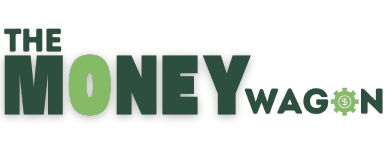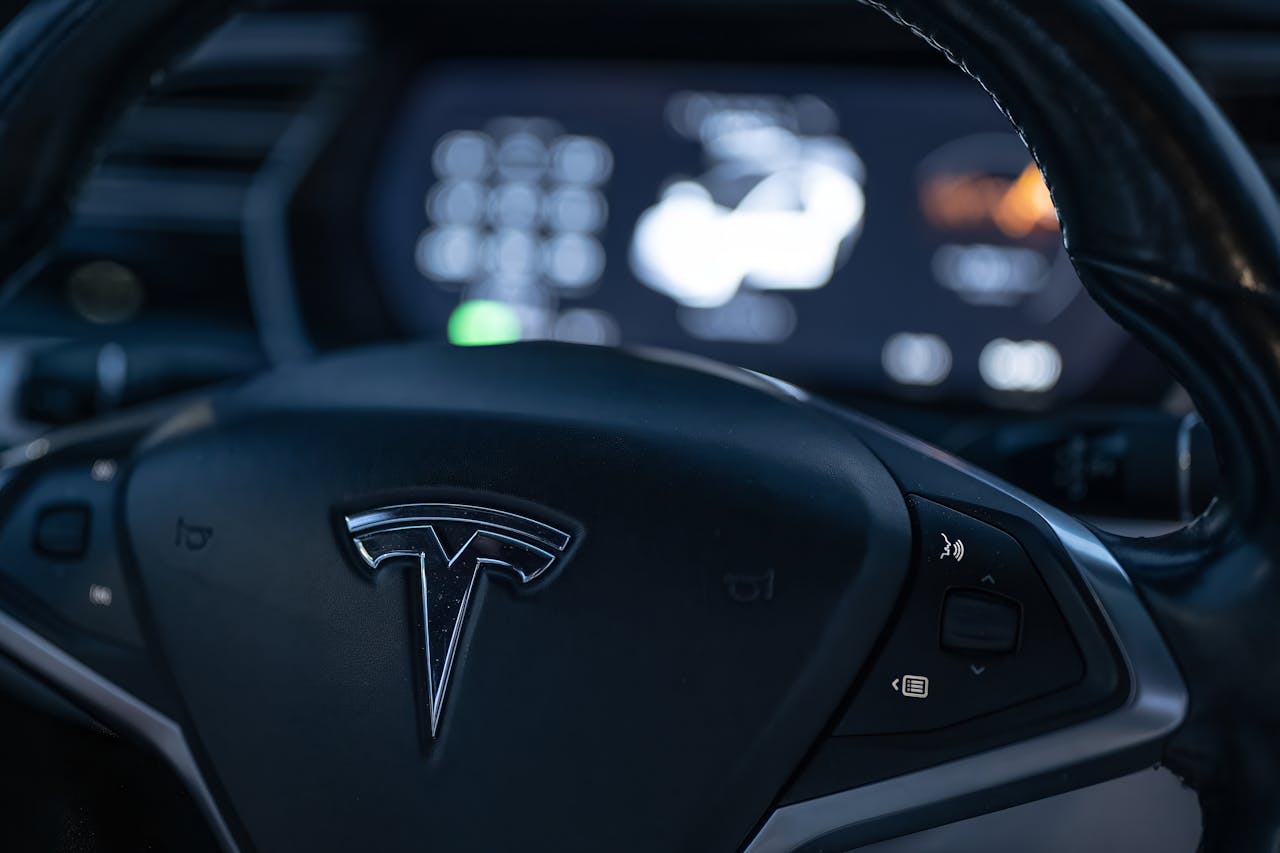How a Daring Vision Rewired the Future
In the early 2000s, electric cars were a joke.
They were clunky, underpowered, and had the personality of a toaster on wheels. The world was still driving gas-guzzling sedans, and the auto industry wasn’t looking to change. Why would it? Oil was king. Emissions were someone else’s problem. And no serious car enthusiast wanted to drive something slow and silent.
But in 2003, two Silicon Valley engineers — Martin Eberhard and Marc Tarpenning — saw something the world didn’t.
They believed that electric vehicles weren’t just possible — they could be desirable. Fast. Stylish. Smart. A clean alternative that didn’t feel like a compromise.
Their vision wasn’t about building a car company.
It was about proving a point:
That clean technology could be better than what we already had.
They didn’t come from Detroit. They didn’t have a factory.
What they had was conviction — and the courage to challenge an entire century of automotive tradition.
So they founded Tesla Motors, naming it after the great inventor Nikola Tesla, the pioneer of alternating current – a nod to bold ideas ahead of their time.
In the beginning, Tesla wasn’t about changing the world.
It was about changing minds.
What Made Their Idea Different?
While traditional automakers saw EVs as weak alternatives, Tesla’s approach was radical:
- Design-first: The car had to look and feel better than anything else on the road
- Performance-driven: It had to be faster, smarter, and more fun than gas cars
- Tech at the core: Batteries, software, and innovation would lead — not legacy systems
- Mission-focused: Every decision tied back to sustainability and disruption
This wasn’t just engineering — it was entrepreneurial storytelling at its finest. And like every bold story, Tesla’s journey was just getting started.
A Billion-Dollar Idea Meets a Billion-Dollar Risk
By 2004, Tesla had a prototype and a plan — but not enough capital to scale. Investors were hesitant. The idea of an all-electric sports car seemed too niche, too expensive, too risky.
Then came Elon Musk.
At the time, Musk was already known for co-founding Zip2 and PayPal, both successful tech startups. But he wasn’t chasing safe bets. He was looking for moonshots — ideas that could shift humanity forward.
When Musk saw Tesla’s early vision, he didn’t just write a check.
He saw an opportunity to electrify the future of transportation, and he committed.
He joined as Tesla’s lead investor and chairman, putting in $6.5 million of his own money — more than anyone else. Over time, as internal disputes and growing pains unfolded, Musk took a more active role. By 2008, he was CEO and Chief Product Architect.
And that’s when Tesla’s real test began.
2008: The Year Tesla Nearly Died
The global financial crisis hit hard. Funding dried up. Supply chains were strained. Tesla had finally built its first production vehicle — the Tesla Roadster — a sleek electric sports car based on the Lotus Elise.
It was fast, beautiful, and revolutionary.
But it was also expensive to build, and delivery delays mounted. Tesla was burning through cash. They had 500 employees to pay, hundreds of customers waiting, and almost no money left.
Behind the scenes, Musk was borrowing from friends, taking personal loans, and even putting his last $20 million into Tesla to keep it alive.
At one point, both Tesla and SpaceX (his rocket company) were weeks from collapse.
“It was the worst year of my life,” Musk later said.
But he didn’t quit. He doubled down. Tesla secured emergency funding just in time, and in 2009, a $465 million loan from the U.S. Department of Energy gave Tesla the runway it desperately needed.
Startup Lesson #1:
Great companies aren’t built when everything’s easy. They’re forged in the fire.
From Prototype to Powerhouse: Tesla’s Rise
Surviving wasn’t enough. Now Tesla had to deliver — not just a car, but a revolution.
And so began a product journey that would redefine what people expected from a car:
- 2012 – Model S: A luxury electric sedan with record-breaking range, acceleration, and a minimalist touchscreen interface that felt like the future.
- 2015 – Model X: An SUV with Falcon Wing doors and family-friendly performance.
- 2017 – Model 3: The mass-market EV, starting at $35,000 — Tesla’s boldest play to date.
- 2020 – Model Y: A crossover that quickly became Tesla’s best-selling vehicle.
Every model pushed boundaries — not just in performance, but in how cars were made, sold, and updated (over-the-air software updates became a Tesla trademark).
More than that, Tesla wasn’t building cars — it was building an ecosystem:
- Superchargers for long-distance travel
- Autopilot for self-driving capability
- Tesla Energy for solar panels and battery storage
- Gigafactories for large-scale production
Tesla didn’t want a slice of the industry — it was rebuilding the entire machine.
Startup Lesson #2:
Don’t just disrupt. Redesign the entire experience.
Tesla’s Financial Evolution: From Burning Cash to Billion-Dollar Profits
For years, Tesla was laughed at by Wall Street. Analysts called it a “money pit.” The company posted losses quarter after quarter, even as revenue grew.
But what critics missed was that Tesla wasn’t focused on short-term profit. It was focused on long-term infrastructure and innovation.
Musk poured capital into:
- Building Gigafactories on multiple continents
- Owning the battery supply chain through deals with Panasonic and CATL
- Hiring world-class AI, robotics, and engineering talent
- Vertical integration — controlling design, software, sales, and even insurance
This relentless reinvestment paid off. By 2020, Tesla became:
- The world’s most valuable carmaker
- Profitable for the first full year
- A key player in clean energy
- A global employer with over 140,000 employees
Startup Lesson #3:
Scale isn’t just about growth. It’s about building the foundation to grow exponentially.
More Than a Car Company: Tesla’s Bigger Mission
Tesla’s stated mission is simple but world-changing:
“To accelerate the world’s transition to sustainable energy.”
Every move — whether it’s launching the Cybertruck, developing the Tesla Bot, or pushing toward autonomous driving — ties back to that goal.
Even when critics doubted its direction, Tesla stayed mission-locked.
That’s what keeps great companies alive.
That’s what turns startups into movements.
Startup Lesson #4:
If your mission is clear, your strategy writes itself.
Tesla as an Employer: Not for the Faint of Heart
As Tesla scaled, it became one of the most sought-after companies to work for — especially among young engineers, AI specialists, and clean energy advocates.
But joining Tesla wasn’t like joining a typical corporation.
The pace was brutal. The expectations were high. Deadlines were aggressive. Elon Musk himself is known to sleep on the factory floor, answer emails at 3 AM, and expect similar commitment from his team.
Yet, for many employees, it was worth it.
Why? Because they weren’t just assembling parts — they were building the future. Working at Tesla meant being part of something that would outlive them — and possibly change the planet.
Startup Lesson #5:
Culture is more than perks — it’s purpose, pressure, and belief.
Tesla’s Impact: A Beacon for Startups
Tesla didn’t just make electric cars cool. It made radical thinking profitable.
It proved that:
- You can challenge century-old industries
- You can turn losses into leverage
- You can build hardware and software together
- You can make sustainability scalable
- You can start with no experience in an industry — and lead it within a decade
For new entrepreneurs, Tesla is a case study in courage. It shows that you don’t need to start safe. You need to start right — with purpose, innovation, and a plan to learn fast.
Startup Lesson #6:
The world doesn’t reward the most cautious founder. It rewards the most committed one.
The Road Ahead: Tesla’s Future Potential
As of 2025, Tesla isn’t slowing down. It’s doubling down — on innovation that sounds like science fiction:
- Autonomous Robotaxis: Turning every Tesla into a revenue-generating taxi
- Humanoid Robots (Optimus): Designed to handle physical labor, from factories to households
- AI and Dojo Supercomputers: Building intelligence infrastructure to train machines faster than anyone else
- Global Energy Ecosystems: From solar rooftops to grid-scale batteries, aiming to replace fossil fuels entirely
- New Markets: Insurance, ride-hailing, clean energy consulting — even AI licensing
Tesla is no longer just a carmaker. It’s becoming a platform for energy, intelligence, and automation.
For startups watching from the sidelines, it’s a reminder: you don’t need to stay in one lane. You can build a company that evolves, expands, and elevates entire industries.
The Moral of the Story: What Tesla Teaches Every Founder
Tesla’s journey — from a scrappy startup on the brink of bankruptcy to a global force shaping the future — is not just about Elon Musk or electric cars.
It’s about what happens when vision, risk, and relentless execution come together.
Here’s what you, the founder, can take away:
- Start with a mission, not a product.
- Back your idea with action — even when no one else does.
- Build a company that learns fast, moves faster, and never stops improving.
- Make failure part of the journey — not the end of it.
- Don’t just disrupt — reimagine what’s possible.
- Treat money as a tool, not a scoreboard.
And most importantly…
If your dream is big enough, you’ll find a way to make it real — even if the world says it’s impossible.
Final Words: Your Tesla Moment Awaits
Somewhere in a small room, a garage, a co-working space, or a notebook… is a founder like you — dreaming of a product that could one day change everything.
Maybe it’s clean tech. Maybe it’s health, education, design, or AI.
What matters is that you start.
That you believe deeper than the doubt.
And that you build not just for profit — but for progress.
Tesla’s story isn’t finished. And neither is yours.
So the question is:
What future are you building?
Written for every dreamer who dares to disrupt.
By themoneywagon.com – where money meets meaning, and startups meet strategy.




